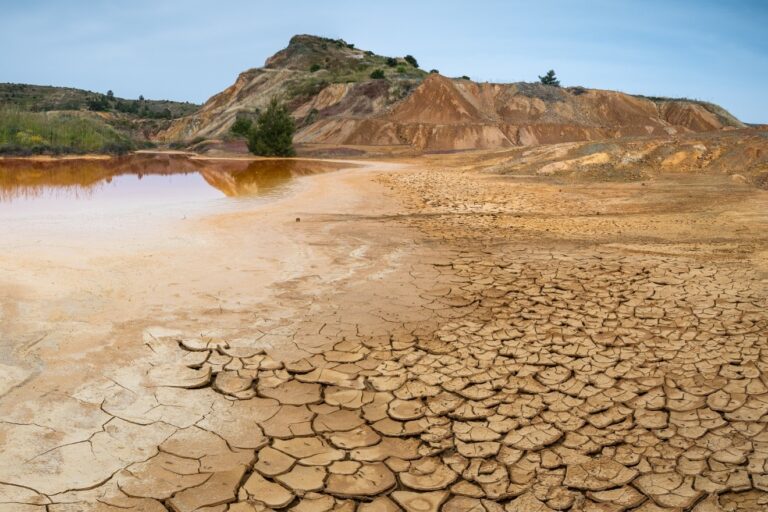Europe is currently confronting a significant and escalating drought crisis as the summer of 2025 progresses. Multiple scientific agencies report expanding drought conditions, profoundly impacting ecosystems, agriculture, water resources, and communities across the continent.
Extent and Evolution of the Drought
- According to the Combined Drought Indicator (CDI) from the European Drought Observatory, by late May 2025 drought warning levels were observed in extensive areas including the Baltic region, the UK, northern France, Benelux, parts of Germany, Poland, Czechia, Slovakia, Belarus, Ukraine, Romania, Bulgaria, Greece, the western Balkans, Cyprus, Türkiye, and parts of the Mediterranean islands. Alert (more severe) conditions were already in place in southeastern Spain, Cyprus, North Africa, central/southeastern Türkiye, and the Middle East (Figure 1).
- The Joint Research Centre’s “Drought in Europe – June 2025” report confirms a severe drought affecting central, northern, eastern Europe, the eastern Mediterranean, and northwestern Africa. These conditions were triggered by low rainfall from March through May and compounded by above-average temperatures (e.g., anomalies exceeding 2 °C in regions like Iceland, southern Norway, Ireland, northern France, and the Alps).
Impacts on Agriculture, Vegetation, and Hydrology
- Emerging vegetation stress is especially notable in eastern Europe, while soil moisture deficits are already hampering plant growth across the Mediterranean region.
- In northwestern Europe—Benelux, northern France, and Germany—agricultural concerns are rising due to severe rainfall deficits, putting winter and spring crop yields at risk. Conversely, parts of the Iberian Peninsula, Italy, and Greece have experienced more favorable conditions and could see yields increase by an estimated 15–20% in Spain and Portugal (Figure 2).
Broader Environmental Stress
- The April 2025 JRC report highlighted that March in Germany was the driest ever recorded, and the Rhine River levels dropped to roughly half of normal at Cologne by April 12 (Figure 3).
- Forecasts projecting into summer warn of continued dry and warm conditions, especially in northern and western Europe—raising concerns for agriculture, river transport, and ecosystem health.
Climatic Context
- The drought has been strongly driven by persistent rainfall deficits across much of Europe during spring 2025, combined with above-average temperatures that accelerated soil drying and evaporation (Figure 4).
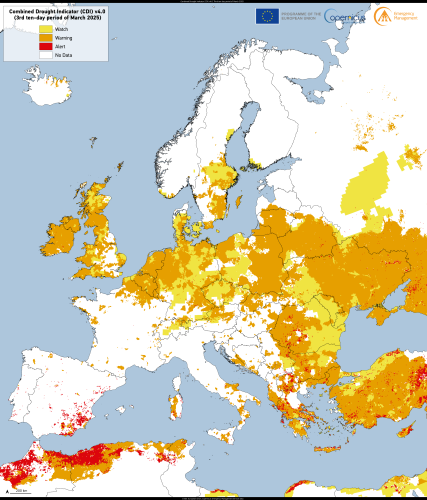
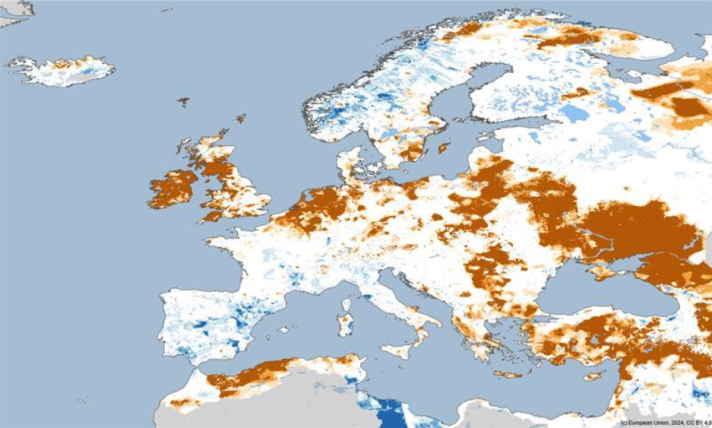
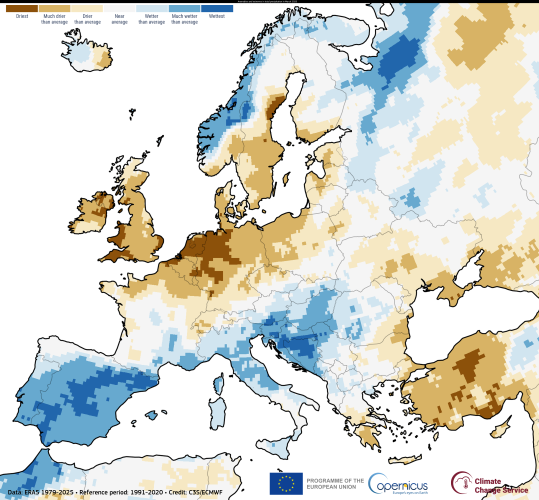
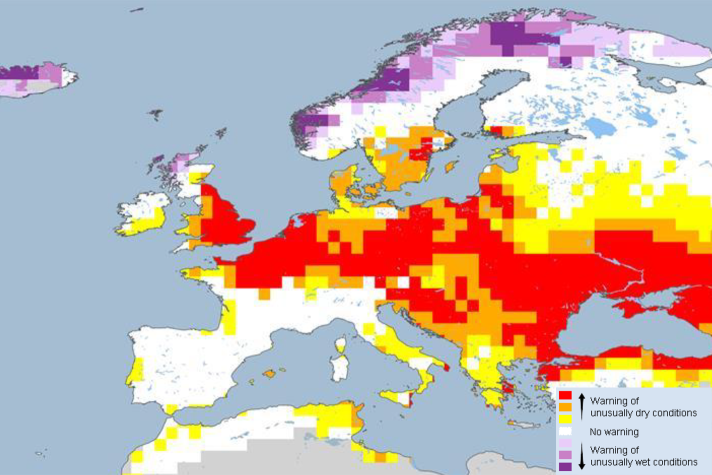
References
European Drought Observatory / Copernicus Emergency Management Service – https://drought.emergency.copernicus.eu/
JRC “Drought in Europe – June 2025” report – https://joint-research-centre.ec.europa.eu/jrc-news-and-updates/escalating-drought-threatens-europes-ecosystems-and-agriculture-2025-06-23_en
JRC April 2025 drought brief – https://joint-research-centre.ec.europa.eu/european-and-global-drought-observatories/current-drought-situation-europe_en
WMO News – Extreme Heat in Europe – https://wmo.int/media/news/extreme-heat-grips-europe

